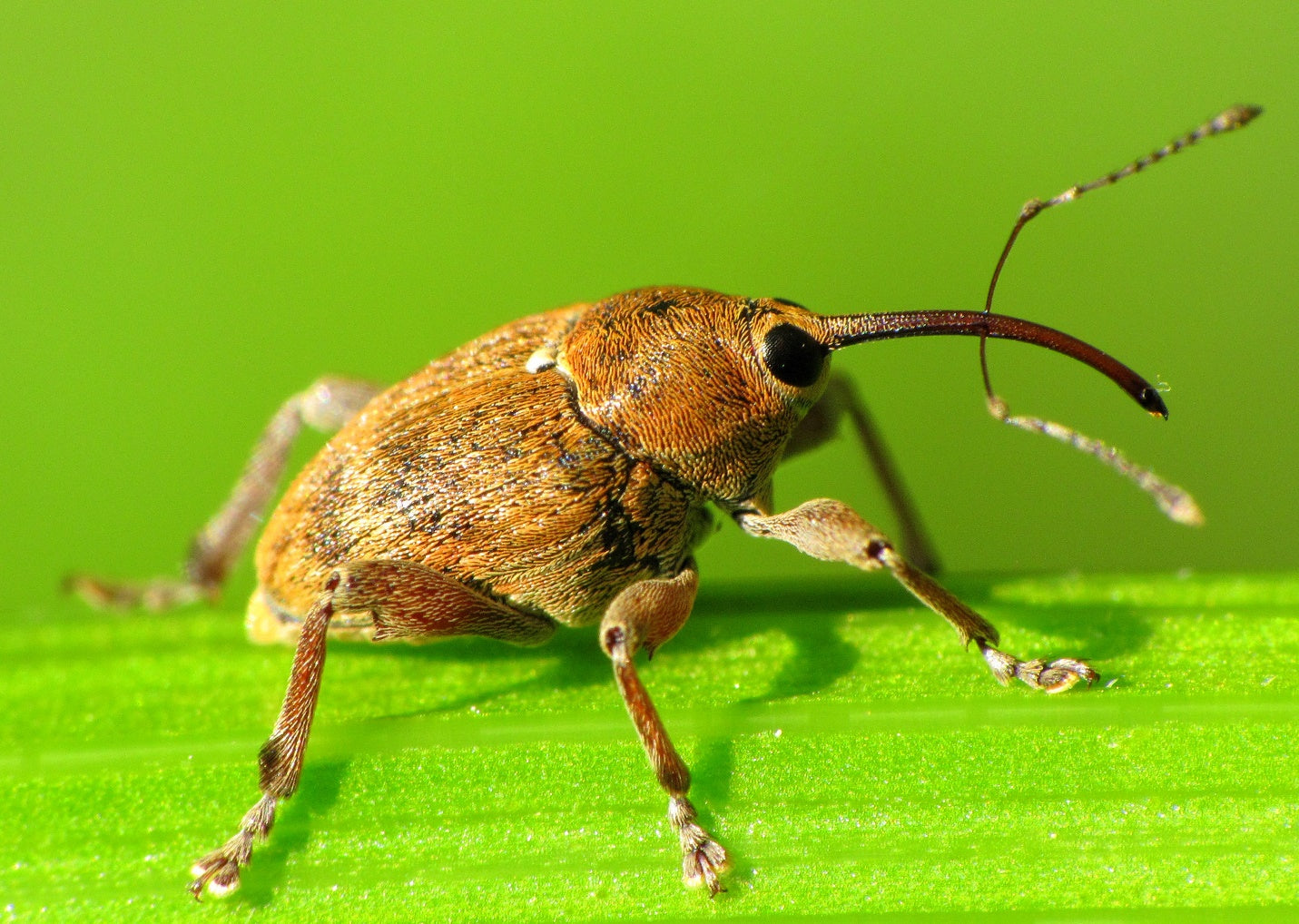
Weevils in Your Pantry: Identification & Removal
Weevils are a common pantry annoyance that can infest a wide variety of dry goods, especially those in bulk amounts such as grains, cereals, seeds, and nuts, among others. These small insects can quickly become a major pest if not addressed promptly or properly. Understanding how to identify weevils from your pantry is the first step in removal, and is a crucial element in maintaining a clean and pest-free home for the future.
Identifying Weevils
Weevils are easily recognized by their distinctive elongated snouts. The most common pantry-invading species are the rice weevil, granary weevil, and maize weevil. Weevils are small and can vary in color, with the most common being brown and black. They can be hard to spot as each species is distinct, and might take some creativity to eliminate completely, but it isn't an impossible feat.
- Rice Weevil: Rice weevils are small, and have spotted patterns on their wings. They're capable of flight and are commonly found infesting rice, grains, and cereals and other bulk foods.
- Granary Weevil: The bigger species of the three common types are Granary weevils, and dark brown and black. Unlike rice weevils, they can't fly but are almost always found hovering around bulk food items in your cupboards and unrefrigerated food storage.
- Maize Weevil: Maize weevils are similar in appearance to rice weevils but slightly larger and also capable of flying. These weevils like dry foods and won't hesitate to break the packaging of any accessible items hidden behind closed pantry doors.
Life Cycle of Weevils
Female weevils start their cycle by laying their eggs inside grains or seeds, possibly hundreds of eggs in their lifetime. Once hatched, which only takes a few days to a week, they burrow inside the grains or seeds and leave a trail of destruction as they feed. This stage can last for several weeks, while the larvae and molt multiple times, continuously and mercilessly ruining and degrading the food supply.
The pupal stage happens after the larva grows out of its infancy, still being inside the stored food. The weevil emerges as an adult after several weeks, and makes its way out, leaving behind an obvious exit hole in the food. They continue to feed and reproduce, bringing this vicious cycle full circle and continuing the widespread contamination if not properly addressed in a timely manner.
Removing Weevils from Your Pantry
Effective removal of weevils requires a combination of thorough cleaning, proper storage, and preventive measures.
- Inspect: Regularly inspect all dry goods in your pantry, including grains, cereals, nuts, seeds, and spices. Discard any infested items immediately to avoid any hangers-on. Be sure to check unopened packages as well, as weevils can penetrate cardboard, paper, and plastic packaging.
- Intensive Cleaning: Empty your pantry and vacuum shelves, corners, and potentially any openings under walls and remove any remaining weevils, eggs, or larvae. Wipe down surfaces with a cleaning solution, and make sure to pay special attention to cracks and seams where weevils may be hiding.
- Safe and Sterile: Keeping all dry goods in airtight containers made of glass, metal, or a more durable plastic. This will keep weevils from accessing and infesting your food. Or you can consider taking a more natural approach: home remedies like bay leaves or cloves can be effective as their scent can deter weevils.
- Temperature Treatment: For items you suspect may be infested or at risk of being affected, consider freezing them ahead of time, or for at least four days, or heating them in an oven for a little bit. This kind of approach has the potential to kill weevils at all life stages.
- Moderate and Prevent: Place glue traps or traps that attract weevils by scent and pheromones in your pantry to monitor for weevils and other pests. Regularly clean and inspect to future-proof your pantry.
- Professional Pest Control: If you have a severe infestation, consider seeking out the help of a professional pest control service. MosquitoNix® offers targeted, environmentally-safe, family-friendly solutions and PestNix™ pest control services to manage pantry pests and ensuring that your home remains free of pests like weevils.

Conclusion
Weevils in your pantry can be tiresome, but with proper identification and effective removal methods, you can protect your food and home from ever needing to deal with these pesky creatures. Identifying weevils early is an important step to prevent infestations from spreading, so look for small, dark insects or tiny holes in grains and other dry foods. Once you can identify them, acting immediately is necessary to eliminate them.
Begin by thoroughly checking all food items and throwing out any infested products. Store or freeze any remaining food in airtight containers to prevent further contamination, and regularly clean your pantry shelves while paying close attention to any and all cracks that weevils may be hiding in. The aforementioned natural repellents, such as bay leaves or cloves, can also deter weevils from infesting your home.
For anything you would consider to be more "severe" you might have to resort to using traps or contacting our professional pest control services at MosquitoNix®. Moderation and maintenance are your best bets for keeping your pantry weevil-free. By carefully following these easy steps, you can ensure the safety and cleanliness of your food storage areas and maintain a healthy and pest-free home environment without sacrificing your food storage or comfort. Staying vigilant whenever you open your cupboards and the recommended MoxquitoNix® measures will help keep these persistent pests at bay.
Leave a comment
Comments will be approved before showing up.




